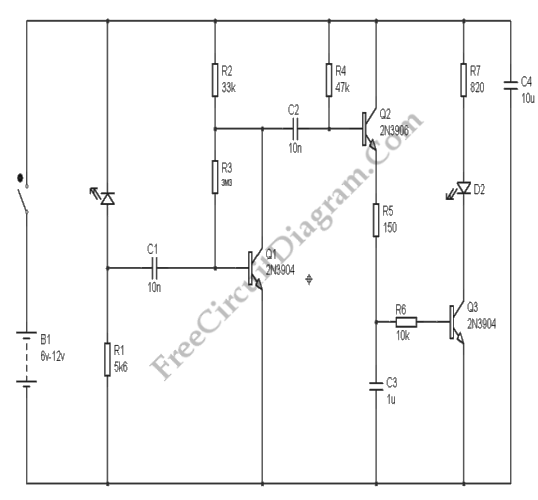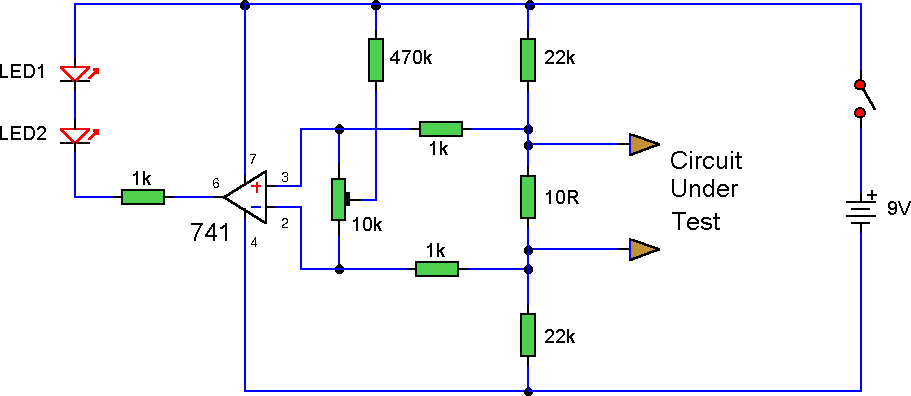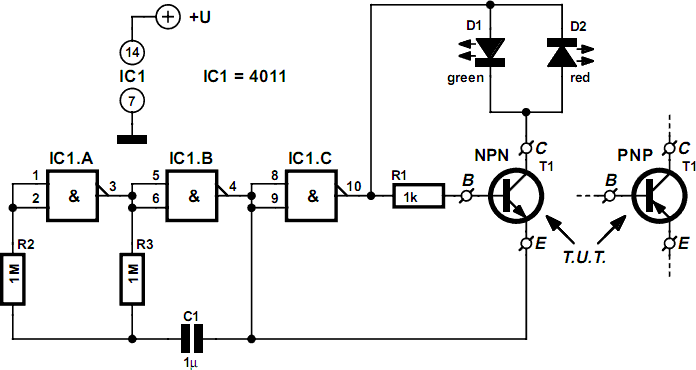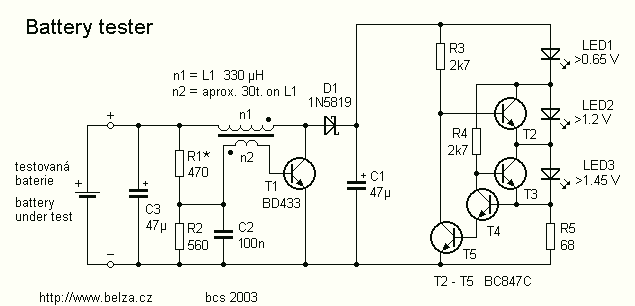
el cheapo cable tester
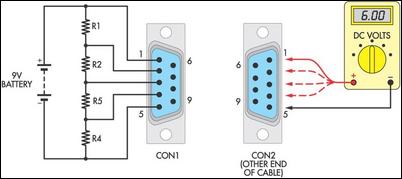
Many cable testers have been previously published, some of which are quite complex. However, here is a cost-effective and straightforward alternative. It utilizes only a 9V battery, two mating connectors, and several resistors, along with a multimeter for voltage measurements. Start by soldering the leads of a 9V battery clip between the two pins that are furthest apart on one of the test connectors. Next, add a ladder of resistors between them for each of the other required pins. Any resistors from a junk box can be used, but values ranging from 1kΩ to 50kΩ are optimal. In the provided example, a five-core data cable terminated with D-9 connectors is to be tested. Connect 0V to pin 5, +9V to pin 1, and four resistors in between. Insert a 9V battery and then use a multimeter to probe the connector at the opposite end of the cable as indicated. Broken, shorted, or incorrect connections can be quickly identified using this method.
The cable tester circuit operates on a simple principle of voltage division and continuity checking. The circuit is designed to test the integrity of connections within a cable by utilizing a series of resistors to create a voltage divider network. Each resistor in the ladder corresponds to a specific pin in the connector, allowing for individual pin testing.
To construct the tester, the following components are necessary: a 9V battery, two D-9 connectors (or any other suitable connectors), a selection of resistors (preferably between 1kΩ and 50kΩ), and a multimeter. The battery clip is soldered to the two pins on one of the connectors, establishing the power source for the circuit. The resistors are connected in series between the power and ground connections, with each resistor leading to a different pin on the connector.
When testing a cable, the user connects the cable under test to the second D-9 connector. By applying the 9V battery and measuring the voltage at the corresponding pins on the opposite connector with a multimeter, it is possible to determine the condition of each connection. A reading close to 9V at a pin indicates a good connection, while a significantly lower voltage suggests a potential issue such as a short circuit, open circuit, or incorrect wiring.
This method is particularly useful for troubleshooting and verifying the integrity of multi-core cables in various applications, providing a reliable and low-cost solution for cable testing.Many cable testers have been published before, some quite complex, but here`s a cheap and simple alternative. It uses only a 9V battery, two mating connecators and a few resistors, as well as a multimeter for voltage measurements.
Begin by soldering the leads of a 9V battery clip between the two pins furthest apart on one of the test connectors an d then add a ladder of resistors between them for each of the other required pins. Any junk-box resistors will do but values between 1k © and 50k © are best. In the example shown, a five-core data cable terminated with D-9 connectors is to be tested. Connect 0V to pin 5, +9V to pin 1, and four resistors in between. Plug in a 9V battery and then probe the connector at the other end of the cable with a multimeter as indicated. Broken, shorted or incorrect connections are all quickly evident using this method. 🔗 External reference
The cable tester circuit operates on a simple principle of voltage division and continuity checking. The circuit is designed to test the integrity of connections within a cable by utilizing a series of resistors to create a voltage divider network. Each resistor in the ladder corresponds to a specific pin in the connector, allowing for individual pin testing.
To construct the tester, the following components are necessary: a 9V battery, two D-9 connectors (or any other suitable connectors), a selection of resistors (preferably between 1kΩ and 50kΩ), and a multimeter. The battery clip is soldered to the two pins on one of the connectors, establishing the power source for the circuit. The resistors are connected in series between the power and ground connections, with each resistor leading to a different pin on the connector.
When testing a cable, the user connects the cable under test to the second D-9 connector. By applying the 9V battery and measuring the voltage at the corresponding pins on the opposite connector with a multimeter, it is possible to determine the condition of each connection. A reading close to 9V at a pin indicates a good connection, while a significantly lower voltage suggests a potential issue such as a short circuit, open circuit, or incorrect wiring.
This method is particularly useful for troubleshooting and verifying the integrity of multi-core cables in various applications, providing a reliable and low-cost solution for cable testing.Many cable testers have been published before, some quite complex, but here`s a cheap and simple alternative. It uses only a 9V battery, two mating connecators and a few resistors, as well as a multimeter for voltage measurements.
Begin by soldering the leads of a 9V battery clip between the two pins furthest apart on one of the test connectors an d then add a ladder of resistors between them for each of the other required pins. Any junk-box resistors will do but values between 1k © and 50k © are best. In the example shown, a five-core data cable terminated with D-9 connectors is to be tested. Connect 0V to pin 5, +9V to pin 1, and four resistors in between. Plug in a 9V battery and then probe the connector at the other end of the cable with a multimeter as indicated. Broken, shorted or incorrect connections are all quickly evident using this method. 🔗 External reference
